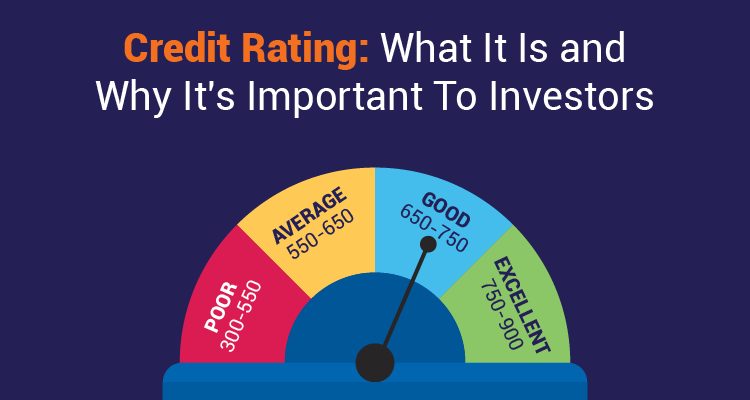Before investing in bonds, it is important to understand credit ratings. Credit ratings help you figure out the creditworthiness of the issuer, which directly impacts the risk and return associated with the investment. Let us know more about the importance of credit ratings and how they influence the different types of bonds in finance.
What Are Credit Ratings?
Credit ratings are a grade given by credit rating agencies (like CRISIL or ICRA) that denote the probability of a bond issuer defaulting on their obligations to their lenders. These ratings are graded in the form of letters. Bonds with higher grades indicate lower risk.
For instance, bonds rated AAA or AA are considered high-quality investments with low risk. Those rated BB or lower usually imply higher volatility and carry a higher risk of default.
Also Read: Can You Open a Demat Account Without a PAN Card?
How Credit Ratings Impact Bond Investing
Credit ratings play a crucial role in determining the interest rates or yields offered by bonds. Bonds by issuers with higher credit ratings typically offer lower rates because they are seen as safer investments.
On the other hand, bonds with lower credit ratings need to offer higher yields to attract investors as a form of compensation for the increased risk they will be taking.
For example, government bonds are a type of bond in finance that usually come with high credit ratings due to the backing of a stable government.
In contrast, corporate bonds can vary widely in credit ratings depending on the financial health and stability of the issuing company.
Types of Bonds in Finance and Their Credit Ratings
Various types of bonds in finance come with different risk profiles, largely determined by their credit ratings:
1. Government Bonds
Generally, these bonds carry the highest credit ratings, reflecting the stability and creditworthiness of the government. They are considered low-risk investments, suitable for conservative investors.
2. Corporate Bonds
The credit ratings of corporate bonds vary widely. High-rated corporate bonds are seen as relatively safe, while lower-rated bonds, often called junk bonds, offer higher yields but come with greater risk.
3. Municipal Bonds
Issued by local governments or municipalities, these bonds are typically rated between government bonds and corporate bonds in terms of risk. They often provide tax advantages, which can enhance their appeal despite their credit ratings.
4. Convertible Bonds
These bonds, which can be converted into a predetermined number of the issuer’s equity shares, usually have lower credit ratings than standard corporate bonds due to their added complexity and potential for higher risk.
Understanding the credit ratings of these various types of bonds in finance is essential for investors to determine the appropriate level of risk for their portfolios.
The Importance of Monitoring Credit Ratings
Credit ratings are not constant. In other words, once set, they can change based on the financial health of the issuer, economic conditions, or changes in the issuer’s business operations. It’s crucial for bond investors to monitor these ratings regularly. A downgrade in credit rating can lead to a drop in the bond’s price, while an upgrade can enhance its value.
For instance, a corporate bond that is downgraded from investment grade to junk status will see a significant increase in yield as investors demand higher returns ftrador taking on more risk. This shift directly impacts the financial bond meaning for investors, as the bond’s risk profile and return expectations change.
In Conclusion
Credit ratings are a vital tool in bond investing, offering insights into the risk and potential return of various types of bonds in finance. By understanding and monitoring these ratings, investors can make informed decisions that align with their financial goals and risk tolerance.
Frequently Asked Questions
1. What is a credit rating, and why is it important in bond investing?
- Understanding the role of credit ratings in assessing the risk associated with bond investments.
2. How do credit ratings affect the yield on bonds?
- Exploring the relationship between credit ratings and the interest rates offered on bonds.
3. Can a bond’s credit rating change over time, and how does this impact investors?
- Discussing the potential for rating upgrades or downgrades and their implications for bondholders.
4. What are the main credit rating agencies, and how do they differ in their ratings?
- An overview of major credit rating agencies and the variations in their rating methodologies.
5. Is it safe to invest in bonds with lower credit ratings?
- Evaluating the risks and potential rewards of investing in lower-rated or “junk” bonds.
6. How can individual investors access and interpret bond credit ratings?
- Guidance on where to find credit ratings and how to understand them in the context of bond investing.
7. What factors do credit rating agencies consider when rating bonds?
- An exploration of the criteria used by agencies to assess the creditworthiness of bond issuers.
8. How do credit ratings impact the liquidity of bonds?
- Discussing how a bond’s credit rating can influence its ease of buying and selling in the market.
9. What is the difference between investment-grade and speculative-grade bonds?
- Clarifying the distinctions between higher-rated (investment-grade) and lower-rated (speculative or junk) bonds.
10. How should credit ratings be used in conjunction with other bond analysis tools?
- Tips on integrating credit ratings with other factors like duration, interest rate risk, and issuer fundamentals in bond investment decisions.
